 BIG STORY: S.C. farmers losing hope amid trade war
BIG STORY: S.C. farmers losing hope amid trade war
NEWS BRIEFS: Blue Jamboree grows, Legal justice group turns 40, more
COMMENTARY, Brack: To move forward, learn the history you may not know
SPOTLIGHT: S,C. Hospital Association
MY TURN, Bright-Matthews: Season for abortion bans ends now
FEEDBACK: On the $350 budget surplus and better budgeting
MYSTERY PHOTO: Old brick building
S.C. ENCYCLOPEDIA: South Carolina’s Hispanic residents
NEWSBIG STORY: S.C. farmers losing hope amid trade war
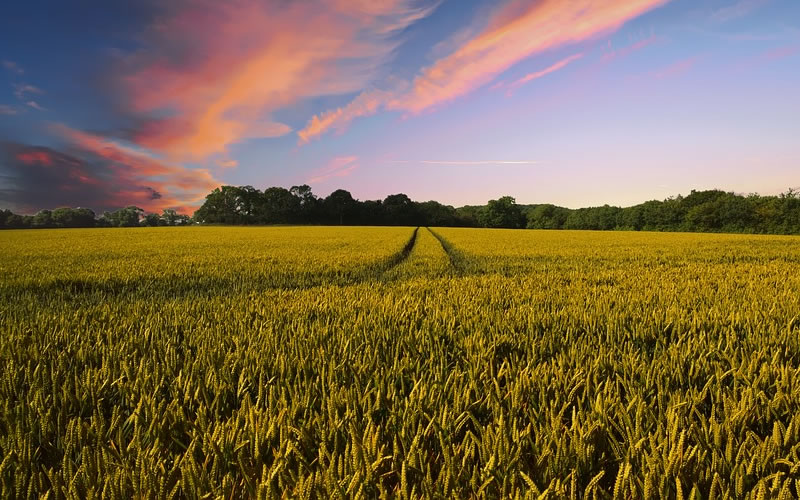
By Lindsay Street, Statehouse correspondent | If years of crop losses weren’t enough to break S.C. farmers, the ongoing trade war with China just might.
“Farmers are optimistic by nature. It takes a lot to really get us because we’re accustomed to bad weather,” longtime Newberry farmer John Long told Statehouse Report this week. “What we’re experiencing now is self-inflicted, and it’s really discouraging. I hear more farmers grumbling now than I think I ever heard.”
That self-inflicted pain is two-fold: a hold-up of governmental disaster relief funds from last year’s flooded fields, and the crash of commodity grain prices linked to the escalating trade war with China.
The American Farm Bureau reported recently that farming bankruptcies for the 12 months leading up to June 2019 were up 13 percent from the previous year. Six farming bankruptcies were reported in South Carolina — twice as many as the previous year.
“That’s the writing on the wall of what we’re going to be looking at if we don’t continue to get some relief from the federal government and this trade war doesn’t get resolved,” Long said.
The S.C. Farm Bureau, a state affiliate of the American Farm Bureau that advocates for farmers, is monitoring the pain in the state.
“The farm economy is awful,” media liaison Stephanie Sox said this week. She said it’s a national issue that’s been brought home to South Carolina.
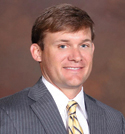
State Rep. Russell Ott, D-Calhoun, is a generational farmer like Long. Ott, whose father Harry is a former House leader who now heads the state farm bureau, said he’s worried about keeping farms like his in business.
“I’m not going to paint a rosy picture just to paint a rosy picture. There are generational farmers who are on the brink of losing their farms,” he told Statehouse Report. “It’s costing more to grow the crops that you can get for the crops at the end of the year and that business model will not be sustaining.”
S.C. House Agriculture, Natural Resources and Environmental Affairs Chair David Hiott, R-Pickens, said he will let the S.C. Department of Agriculture take the lead on pushing for any needed policies or measures to help the state’s farmers. So far, he said, he hasn’t heard anything.
Disaster money stalled
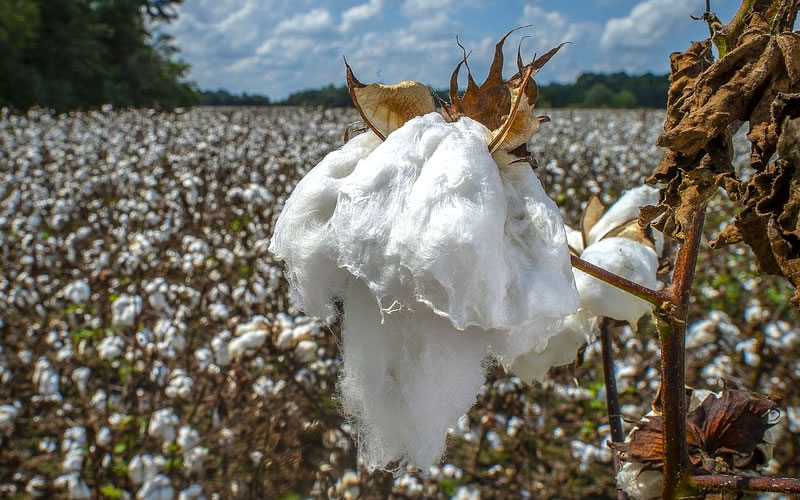
In 2018, many coastal farmers — the farmers who tend to grow large swaths of commodity crops like corn and cotton — suffered a third straight year from tropical storm damage. Last year’s losses were pegged at $205 million.
As Congress tinkered with a disaster package, state lawmakers passed their own, with the caveat that the $25 million would not be allocated if Congress approved a federal bill. That $19.1 billion package passed in June.
But neither state nor federal money has reached farmers yet as bills pile up.
“There’s farmers out there unable to pay bills,” Ott said. “It’s time that we as a state stop waiting around on the federal government, we need to do what we need to do to help our farmers.”
Ott fingered Agriculture Commission Hugh Weathers for not dispersing the state funds. But Weathers’ department Communications Director Eva Moore said there isn’t any state money to release because the federal aid was approved, per the law passed by the state legislature.
Moore said commission expects farmers will be able to apply for federal aid beginning in October. Again.
The trade war continues
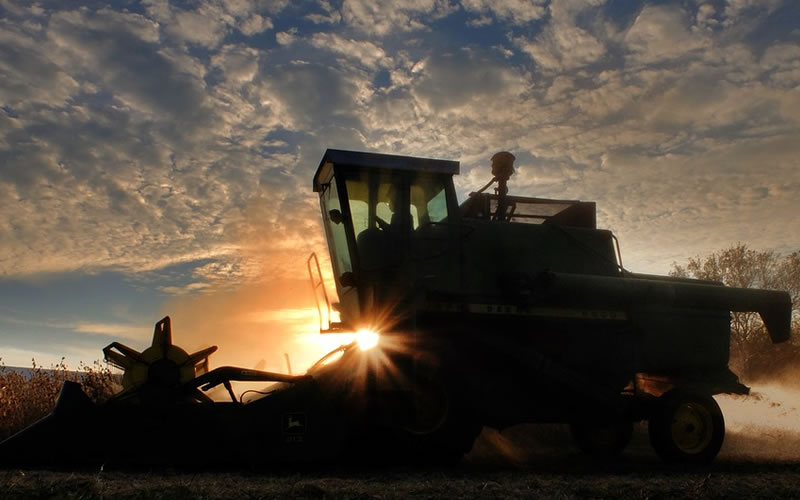
There are 24,600 farmers operating on 4.8 million acres of farmland in South Carolina, according to federal data. The three largest crops affected by the tariffs — corn, soybeans and cotton — account for more than 1.3 million acres in the state and for about a half billion dollars of what’s grown in the Palmetto State.
“Cotton and soybeans are the two crops we are really below water on, below profitable levels so obviously we can’t keep doing that,” Long said. “If the prices don’t recover, we’re losing money with every acre that we plant.”
He said most farmers will make 2020 planting decisions around Thanksgiving, and those plans will have to factor in the yearlong trade war.
In June 2018, President Donald Trump began pressuring China on its prices and alleged currency manipulation. He announced a first round of tariffs — taxes imposed on goods being imported from the country into the United States. In retaliation, China imposed its own tax on U.S. goods, and stopped buying grains from America’s farmers.
Most recently, Trump announced a 10 percent tariff on the remaining $300 billion of Chinese imports into the country. The tax is set to begin during Labor Day weekend. This week, U.S. Sen. Lindsey Graham, R-S.C., said he expected the trade war with China to “drag on.”
Here’s what happens — and is happening now — when China stops buying corn, soybeans and other commodities grown in South Carolina and the United States: prices drop in accordance with the principles of supply and demand — too much supply and too little demand. Cotton is worth half as much as in August 2018, some farmers reported.
- DIG DEEPER: Farmers aren’t alone in feeling the pinch of the trade war. In a new poll by the state Chamber of Commerce, two-thirds of respondents said tariffs were hurting South Carolina.
In an effort to help farmers who have lost sales, federal lawmakers passed a $28 billion aid package. So far, $8.6 billion has been distributed by the end of June. But it’s half a bandage because disaster aid still lingers.
Ott likened the lost-sales aid package to throwing $5 in a field and getting $1 in return.
Long said the assistance has helped, but he thinks the allocation of funds needs to be addressed. The money is allotted by a per acre of specific crop basis, but the amount allocated varies by county. For example, in South Carolina, Laurens County farmers received $24 per acre of crop, and Hampton County farmers received $103 per acre of crop.
“The president has given us some money to help offset these tariffs and we have some suggestions that we’re going to be making in how to do that in a fairer manner,” he said. He works on a committee with the S.C. Farm Bureau that helps recommend policies.
Another long-term implication
Here’s what also happens when China backs out of the U.S. market: China continues to buy the same amount of commodity crops, but now from different countries like Brazil and Australia. And some farmers now fear that those new trade agreements may survive long after the trade war has ended.
“Agriculture is global and we worry that we’ve lost these trading partners with China because Brazil is not wasting any time in picking it up,” Sox said.
In the 1990s, Long was president of a national soybean group that worked to remove soybean tariffs with China.
“We worked hard to get China into the (World Trade Organization) and we wanted to get rid of their tariffs,” he said. “Now, they are not buying any.”
- Have a comment? Send to: feedback@statehousereport.com
NEWS BRIEFS
Blue Jamboree grows, Legal justice group turns 40, more
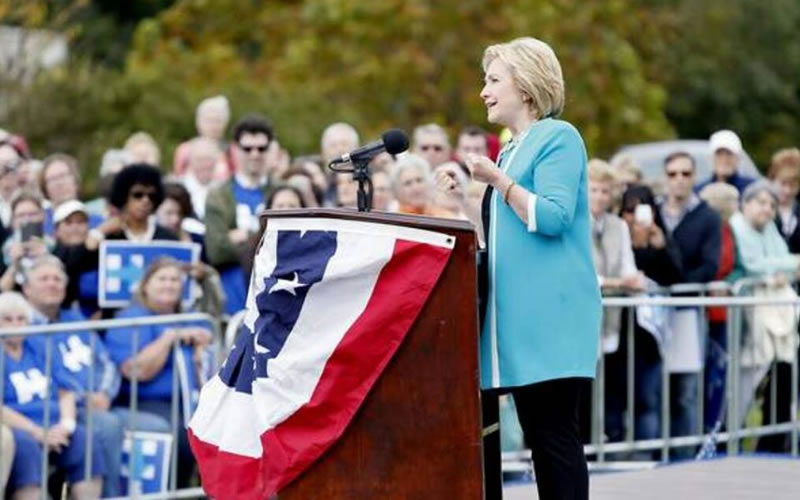
Staff reports | Thousands of Democrats will flock to a North Charleston field Oct. 5 to see big-name presidential candidates as the Charleston County Democratic Party holds its 2019 Blue Jamboree.
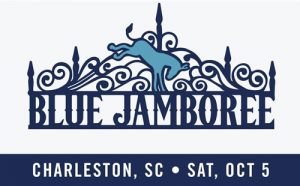 The event, which has been growing since it started in 2010 with 150 people, is getting a lot of attention due to the 2020 presidential contest with more than 2,000 tickets already being sold, according to the county party.
The event, which has been growing since it started in 2010 with 150 people, is getting a lot of attention due to the 2020 presidential contest with more than 2,000 tickets already being sold, according to the county party.
Through Sunday, the party is selling tickets for 50 percent off for the event, which will feature other big names in the party, live music and more in The Bend off Azalea Road in North Charleston.
Sponsors of the event include these presidential candidates: Kamala Harris, Joe Biden, Bernie Sanders, Elizabeth Warren, Tom Steyer, Cory Booker, Andrew Yang, Pete Buttigieg, Michael Bennet, Tulsi Gabbard and Julian Castro.
A volunteer told Statehouse Report that previous highest attendance was 1,000 for the 2015 event, which included Democratic presidential hopefuls Hillary Clinton, Vermont Sen. Bernie Sanders, and former Baltimore Mayor Martin O’Malley. She said the Charleston County Democratic Party may look at capping attendance if it continues to swell.
- Ticket info
- More 2020 presidential news is below.
In other South Carolina news:
![]() Younger correctional officers floated. The Legislative Audit Council released a limited review of the S.C. Department of Corrections. The review (click here) found the department has increased its advertising budget by 2,000 percent from 2013 to 2017, but there has been little to measure the outcome of those ads on recruitment. The report made two additional suggestions: look at allowing correctional officers as young as 18 years old, and conduct background checks on employees and volunteers after hiring consistently. The current minimum age for correctional officers in South Carolina is 21.
Younger correctional officers floated. The Legislative Audit Council released a limited review of the S.C. Department of Corrections. The review (click here) found the department has increased its advertising budget by 2,000 percent from 2013 to 2017, but there has been little to measure the outcome of those ads on recruitment. The report made two additional suggestions: look at allowing correctional officers as young as 18 years old, and conduct background checks on employees and volunteers after hiring consistently. The current minimum age for correctional officers in South Carolina is 21.
‘Alarming’ report shows dire need of affordable housing in S.C. SC Housing released its first comprehensive Housing Needs Assessment for the state of South Carolina in nearly 22 years. In 41 of 46 counties in the state, the average renter is unable to afford a two-bedroom apartment, and current affordable housing only serves one-in-five low-income renters. It called the findings “alarming” and said it should prompt “legislation and in housing policy.” Read the report.
Legal justice group turns 40. Appleseed Legal Justice is turning 40. The group will celebrate 5:30 p.m. Sept. 5 at Senate’s End in Columbia. Click here for information.
Learn about ‘Killer Heat’ in Southeast. The Southeastern Alliance for Clean Energy this week partnered with the Union of Concerned Scientists for a presentation on what climate change means for the Southeast, and what policies should be considered. If you missed the live webinar, here’s the video of the event.
DNA processing has 8,000 cases piled up. S.C. sheriffs are calling for more taxpayer dollars as the state crime lab has an 8,000-case DNA backlog. Read more.
Santee Cooper to phase out coal station. The state-owned utility announced this week that one of its two remaining coal-fired power stations in Georgetown County will be shuttered over the next decade. Read more.
2020 candidate calendar
 Throughout the campaign season, we are working to keep South Carolina informed of candidate events in the state. Have an event you want us to know about? Email us at 2020news@statehousereport.com.
Throughout the campaign season, we are working to keep South Carolina informed of candidate events in the state. Have an event you want us to know about? Email us at 2020news@statehousereport.com.
Marianne Williamson returns to S.C. Democratic presidential candidate and advice author Marianne Williamson will be at an event 6:30 p.m. Aug. 30 at Unity Church of Greenville in Taylors. She then goes to Georgia for a series of weekend events.
Warren joins Clyburn for Sept. 3 student-debt event. Sixth District U.S. Rep. Jim Clyburn, D-S.C.. will host a town hall at S.C. State University in Orangeburg on Sept. 3 to discuss the Student Loan Debt Relief Act. The bill’s co-sponsor, Democratic presidential hopeful U.S. Sen. Elizabeth Warren, will attend.
More head to stump. Folks at the Sept. 16 Galivants Ferry Stump meeting confirmed that more presidential candidates will speak at the event, which starts at 5 p.m. and will be moderated by U.S. Rep. Jim Clyburn, D-S.C. Joining Biden and Minnesota Sen. Amy Klobuchar will be Buttigieg and U.S. Rep. Tulsi Gabbard, D-Hawaii. More are expected.
Sept. 12 Democratic debate lineup set. The Democratic National Committee has announced that 10 candidates will face off in Houston Sept. 12. The debate will air on ABC News. The candidates participating in the debate include: former Texas Rep. Beto O’Rourke as well as Klobuchar, Booker, Buttigieg, Sanders, Biden, Warren, Harris, Yang and Castro. More info.
- Have a comment? Send to: feedback@statehousereport.com
BRACK: To move forward, learn the history you may not know
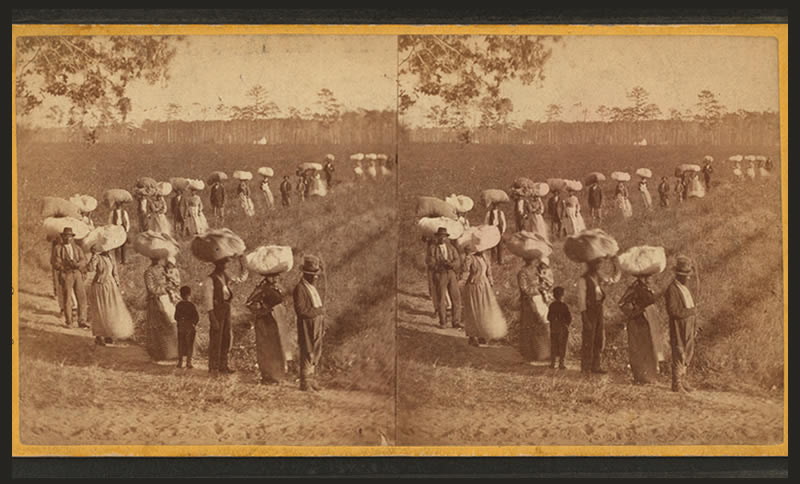
By Andy Brack, editor and publisher | To better understand why South Carolina is like it is, you need to read The 1619 Project.
This blockbuster re-telling of history not taught in schools likely will provide a new understanding about how America became a country — and how enslaved Africans played a vital role — not just a subservient one — in the creation of our democracy.
 Recognizing this fundamental reality may help Americans cope with the lagging vestiges of slavery, still evident today in people’s attitudes and behavior, as well as our imbalanced economic system whose structure dampens the American Dream for far too many.
Recognizing this fundamental reality may help Americans cope with the lagging vestiges of slavery, still evident today in people’s attitudes and behavior, as well as our imbalanced economic system whose structure dampens the American Dream for far too many.
Four hundred years ago this month, the first enslaved Africans arrived in Virginia. The 1619 Project, related in a full issue of The New York Times Magazine, opened with these words: “No aspect of the country that would be formed here has been untouched by the 250 years of slavery that followed. On the 400th anniversary of this fateful moment, it is finally time to tell our story truthfully.”
What unfolds — including more than a dozen impacts of South Carolina’s on the system of slavery — is chilling in its violence and emotion. It gives fresh perspectives and uncomfortable truths on how this system of forced labor created enormous white wealth while dehumanizing people with dark skin:
“Out of slavery — and the anti-black racism it required — grew nearly everything that has truly made America exceptional: its economic might, its industrial power, its electoral system, diet and popular music, the inequities of its public health and education, its astonishing penchant for violence, its income inequality, the example it sets for the world as a land of freedom and equality, its slang, its legal system and the endemic racial fears and hatreds that continue to plague it to this day.”
“This piece unmasks the history of America not written in schoolbooks or taught in classes,” said Columbia public relations executive Bud Ferillo, who created the “Corridor of Shame” documentary about inequities in South Carolina schools. “It offers sobering, often painful, discoveries that should make us think and feel anew about our past, and where that leads us now.”
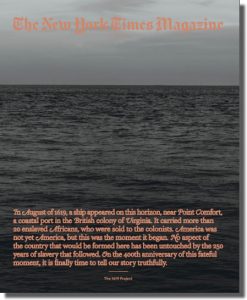 The Rev. Joseph Darby, an AME preacher in Charleston who is a longtime official with the NAACP, hopes the sweeping and frank account of America’s missing history will lead to systemic discussions and progress.
The Rev. Joseph Darby, an AME preacher in Charleston who is a longtime official with the NAACP, hopes the sweeping and frank account of America’s missing history will lead to systemic discussions and progress.
“The 1619 Project is an invaluable tool for everything from community dialogue to academic research to public policy,” he said. “The Project has done something rare by showing how slavery and its still lingering residue shaped and still hinders progress and equity in America.”
Darby shared that looking at the system of slavery and its successor caste system, rather than particular dates and events related, irritated right-wing critics.
“The National Review bemoaned the fact that the Project didn’t focus on more individual black history makers, and I understand why they raised that question. When discussions of race or any problem — like white urban terrorism – focuses on the “individual,” you can dodge frank discussion of the system that produced the individual.”
The Project, however, didn’t shy away from talking about the big impact of two individuals related to South Carolina. One was John C. Calhoun, a vice president and fiery senator who devised the brilliant political concept of nullification, which was the foundation of the cry of “state’s rights” that spread tentacles from the Civil War and the Jim Crow era to the Tea Party and white nationalism now rearing its head.
The Project also highlighted the story of decorated black Army veteran Isaac Woodward who was blinded in 1946 on the way home to visit his mother in Whitmire. The Project shares that his maiming was “one of the catalysts” for what became the modern civil rights movement, which U.S. District Judge Richard Gergel of Charleston addressed this year in a book titled Unexampled Courage.
“I was delighted The 1619 project gave such prominent treatment to the Woodard story,” Gergel told us. “I also was glad to see my central thesis accepted.”
Anyone in state or local government — particularly elected officials — must read The 1619 Project to understand how America became America. It isn’t comfortable, but it’s a step toward dealing with a system that’s still unequal for too many.
Andy Brack’s latest book, “We Can Do Better, South Carolina,” is now available in paperback and for Kindle via Amazon.
- Have a comment? Send to: feedback@statehousereport.com.
S.C. Hospital Association
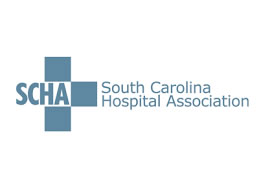 The public spiritedness of our underwriters allows us to bring Statehouse Report to you at no cost. This week’s spotlighted underwriter is the South Carolina Hospital Association, the Palmetto State’s foremost advocate on healthcare issues affecting South Carolinians. The mission of SCHA is to support its members in addressing the healthcare needs of South Carolina through advocacy, education, networking and regulatory assistance.
The public spiritedness of our underwriters allows us to bring Statehouse Report to you at no cost. This week’s spotlighted underwriter is the South Carolina Hospital Association, the Palmetto State’s foremost advocate on healthcare issues affecting South Carolinians. The mission of SCHA is to support its members in addressing the healthcare needs of South Carolina through advocacy, education, networking and regulatory assistance.
Founded in 1921, the South Carolina Hospital Association is the leadership organization and principal advocate for the state’s hospitals and health care systems. Based in Columbia, SCHA works with its members to improve access, quality and cost-effectiveness of health care for all South Carolinians. The state’s hospitals and health care systems employ more than 70,000 persons statewide. SCHA’s credo: We are stronger together than apart.
- To learn more about SCHA and its mission, go to: http://www.scha.org.
Season for abortion bans ends now
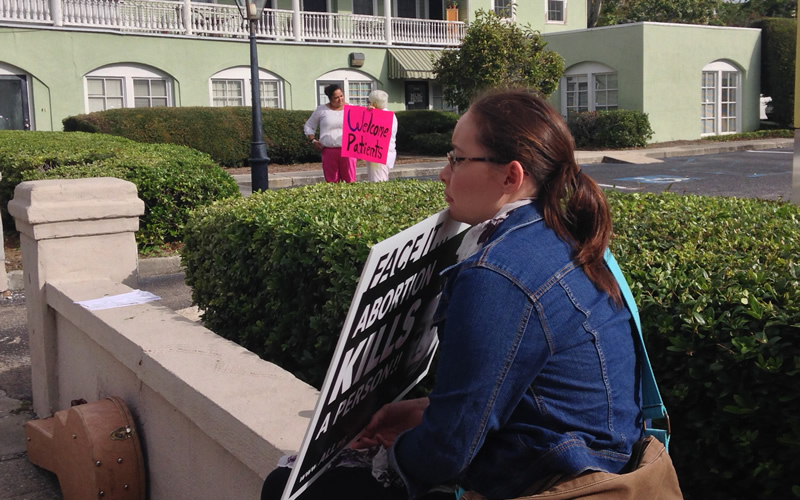
By Sen. Margie Bright Matthews, special to Statehouse Report | In April of this year, the South Carolina House passed an outrageous 6-week abortion ban (H..3020) which would outlaw abortion before a woman even knows they’re pregnant. As a South Carolina state senator, I watched abortion bans pass in Georgia, Kentucky, Louisiana, Mississippi and Ohio, and breathed a sigh of relief when the South Carolina General Assembly adjourned without us having to hear this bill in the Senate.
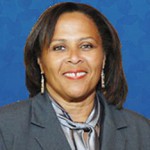
I was sorely mistaken. It turns out, the season for abortion bans isn’t over yet.
In a surprise move by my colleagues, the Senate Medical Affairs committee plans to convene outside of our regular session to fast-track an abortion ban that most of us think is cruel, unnecessary and plain-old government overreach. Like we have seen in other states, there is an explicit and coordinated effort to pass unconstitutional abortion ban bills across state legislatures in order to challenge Roe v. Wade in the now conservative-leaning U.S. Supreme Court. This is an unprecedented measure.
Support for legal abortion is the highest it has been in the last two decades, and at the same time, a handful of radical state legislators insist on pushing their politically-motivated agendas on us. What my colleagues who are pushing for this ban don’t understand is that these bills don’t stop women from getting abortions. They stop women from getting safe abortions.
Let me be clear about the impact this will have on our state: Women of color, poor women, and women who live in rural areas will be harmed most by passing this bill. Women who have economic means will be able to take time off of work, find and pay for high-quality childcare, access reliable transportation to travel to another state, and pay for lodging (keep in mind some states still have waiting periods). These are the lengths we would be pushing women to in order to legally obtain a safe abortion.
South Carolina women are like women across the country: We want to be able to live a safe and healthy life and be free to define our own path. If my colleagues in the Senate cannot see that, if they insist on using deceptive measures and to bend the rules of legislative protocol and process just to score political points, then they should know that I’m prepared to stand against tough odds and show the world that it’s possible to defeat this abortion ban. And they should know I’m not alone.
As part of the State Innovation Exchange’s Reproductive Freedom Leadership Council (RFLC), I stand with 385 state legislators across 46 states who fight for reproductive freedom, abortion rights and access to health care. I know that when South Carolinians testify against an abortion ban and when I speak out against disgraceful, cruel and restrictive bills, we’re building a movement. I’ve seen my sisters in Alabama, Georgia, Kentucky, Missouri and Ohio boldly push back against abortion bans and I’ve seen my sisters in Illinois, New York, Rhode Island and Vermont introduce bills that affirm and protect our values of reproductive freedom, that we should all be able to decide if, when, and how we want to be parents. During the deceptively-coordinated subcommittee hearings in my state, my fellow South Carolinians and I will fight against this cruel ban with the support and strength of RFLC colleagues and Americans across the nation.
The season for abortion bans ends here and now in South Carolina.
Sen. Margie Bright Matthews, a member of the Senate Medical Affairs Committee, is a Democrat who represents Allendale, Beaufort, Charleston, Colleton, Hampton and Jasper counties.
- Have a comment? Send to: feedback@statehousereport.com.
On how to use the $350 million surplus
![]() To the editor:
To the editor:
Suggestion: Figure out a way to give S.C. citizens a one-time lump sum for being bilked out money for years by SCE&G, I received $31.00 refund. This is a shame and disgrace to South Carolina.
— Sandra Carr, Columbia, S.C.
On better budgeting to reduce surpluses
To the editor:
This is an interesting scheme developed by the legislators. Makes the case for the financial fraud investigators’ joke: “It’s not about the money (a rationalization about why the thievery was undertaken). It’s about the money (usually the major motivation for committing fraud).” In this case, it is about the money being handled in a slipshod way.
The current practice is harmful as during the year, basic services are not funded so the legislators can have a pot of money to distribute to patrons to curry favors to get reelected. It is all about the money. The surplus variances are too large and systematic to suggest they are just being fiscally “conservative” in the estimates.
Rather than having the annual spending party, with the same legislators additionally claiming falsely they are talented watchdogs and thus provide value from their part time services; put the excess into a “rainy day fund” so that those that rely on government services, like children in our schools, are not doubly victimized when the economy turns south and cutbacks to one of the largest spending categories- education, are offered up for sacrifice for the common good.
This is a problem that even our legislators can fix if they choose. Rocket science is not needed here. If fact, no science is involved.
— Fred Palm, Edisto Island, S.C.
Send us your thoughts … or rants
We love hearing from our readers and encourage you to share your opinions. But you’ve got to provide us with contact information so we can verify your letters. Letters to the editor are published weekly. We reserve the right to edit for length and clarity. Comments are limited to 250 words or less. Please include your name and contact information.
- Send your letters or comments to: feedback@statehousereport.com
Old brick building
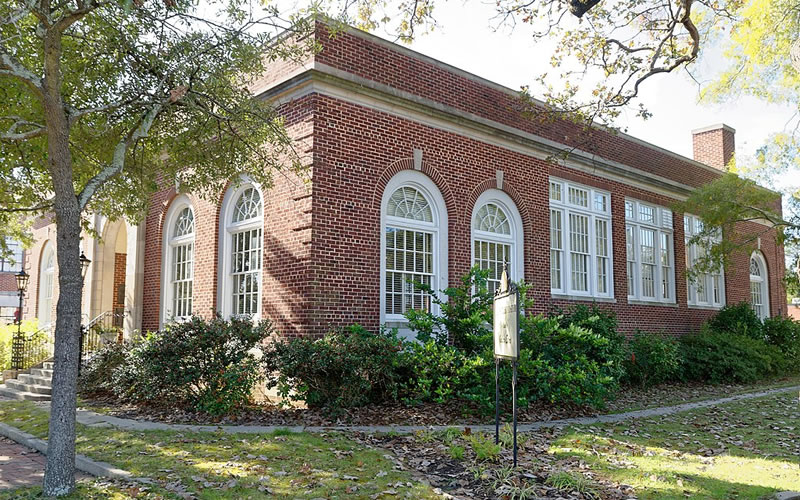
This South Carolina building may look familiar to some of you, but others may wonder whether it is a church, a community center, a college building or something else. What is it and where? Send your guess about the location of this photo to feedback@statehousereport.com. And don’t forget to include your name and the town in which you live.
Our previous Mystery Photo
 Our Aug. 23 mystery, “Peeking into where?” was particularly vexing for many. “Hat Lady” Archie Burkel of James Island explains the photo she submitted: “It was taken looking through the keyhole of Old St. Andrews Parish Church, Ashley River Road. What should make it even harder to identify is the fact that the antique (most likely original) keyhole was replaced with something more modern a few years ago.”
Our Aug. 23 mystery, “Peeking into where?” was particularly vexing for many. “Hat Lady” Archie Burkel of James Island explains the photo she submitted: “It was taken looking through the keyhole of Old St. Andrews Parish Church, Ashley River Road. What should make it even harder to identify is the fact that the antique (most likely original) keyhole was replaced with something more modern a few years ago.”
Thanks for the great photo — and congratulations to the few photo detectives who correctly guessed the church: Bonnie Cooper of Moncks Corner; Frank Bouknight of Summerville; George Graf of Palmyra, Va.; and Allan Peel of San Antonio, Texas.
Graf provided some context taken from a book about the church’s history:
“The tranquility of the magnificently restored Saint Andrew’s Parish Church, surrounded by stately oaks and ancient gravestones, belies a tumultuous past. If its walls could talk, they would tell a story as old as the human condition. Founded in the forest of a new colony, this simple Anglican church served planters and their slaves during the heyday of rice and indigo.
“Before the Civil War, ministry shifted to the slaves, and afterward to freed men and women. Following years of decline and neglect, Saint Andrew’s rose like the phoenix. The history of the oldest surviving church south of Virginia and the only remaining colonial cruciform church in South Carolina is one of wealth and poverty, acclaim and anonymity, slavery and freedom, war and peace, quarrelling and cooperation, failure and achievement. It is the story of a church that has refused to die, against all odds.”
Peel provided more information: “The mystery photo is of the interior of the Old St. Andrew’s Parish Church in Charleston, SC. Also known as St. Andrew’s Episcopal Church, it is the oldest surviving church building as well as the last remaining colonial cruciform style church in South Carolina. The original building was built in 1706 and was expanded to its current cruciform plan in 1723. The church was added to the National Register of Historic Places in 1973. The photo was shot through the old-style skeleton keyhole in the front door. To be more precise, the keyhole on the front door on the right.”
- Send us a mystery: If you have a photo that you believe will stump readers, send it along (but make sure to tell us what it is because it may stump us too!) Send to: feedback@statehousereport.com and mark it as a photo submission.
S.C. ENCYCLOPEDIA
HISTORY: South Carolina’s Hispanic residents
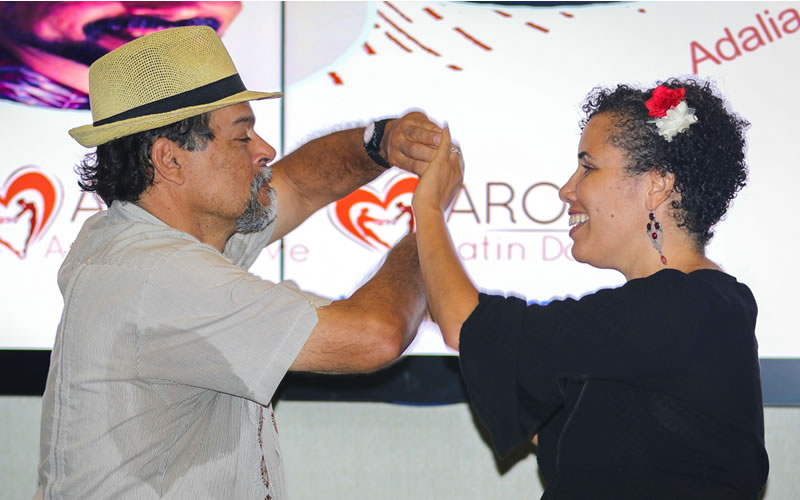
S.C. Encyclopedia | Hispanics are among South Carolina’s oldest and most recent immigrant groups. Long before English settlers founded colonies in the Massachusetts Bay, Spanish explorers laid claim to territory in what is now the United States from the Atlantic to the Pacific. From bases of operation in the Caribbean and Mexico, Spanish emissaries established presidios and missions to protect Spain’s northern colonial frontier. In 1526 Spaniard Lucas Vásquez de Ayllón established the first European settlement in present-day South Carolina (and the United States), San Miguel de Gualdape. A variety of difficulties led to its abandonment by 1527, but a second Spanish settlement near present-day Beaufort, Santa Elena, served as the capital of “La Florida,” the name given to Spain’s holdings in the Southeast, from 1566 to 1576. After Spanish settlers abandoned the Santa Elena site in 1587, Franciscan friars from missions along the coast continued to visit Indian communities in the area. Spain lost its claims to most of present-day South Carolina in the 1670 Treaty of Madrid with Great Britain.
The terms “Hispanic” and “Latino” apply to a broad category of U.S. residents that include persons of Latin American and/or Spanish ancestry. Tremendous diversity exists within these groups in terms of national origin, socioeconomic class, educational attainment, and other characteristics. While a sizable Spanish-speaking population has resided in the United States throughout its history, the volume of Hispanic immigration in the late twentieth century resulted in this group becoming this country’s largest minority population by the year 2000.
Following national trends, South Carolina experienced a rise in its Hispanic population beginning in the second half of the twentieth century. New residents of Cuban and Puerto Rican origin arrived beginning in the 1960s, largely due to military and industrial employment. Colombians, most employed in the textile industry, immigrated to the upstate in the 1970s, and beginning in the 1990s large numbers of Mexican and Central American immigrants arrived. Because of these and other factors (as well as factors in Latin America such as deteriorating economic and political conditions), South Carolina was among eight states with the fastest-growing Hispanic population in the 1990s. Census data reports that their numbers more than tripled in that decade to 95,076, or 2.4 percent of the total state population. Analysts agree, however, that Hispanics across the nation are largely undercounted in the census process. The census of 2000 revealed that the majority (fifty-six percent) of Hispanic residents of South Carolina were of Mexican origin, followed by Central and South Americans. Thirteen percent were Puerto Rican, and three percent were of Cuban origin.
The impact of this new population group is seen through changes in popular culture, supermarket and restaurant offerings, bilingual signage, the emergence of Spanish-language media, and in public education. It is also evident in their economic contribution, particularly in labor-intensive, low-wage industries. Further, the purchasing power of Hispanics in South Carolina in 2002 was estimated at more than $2.2 billion. A commission appointed by South Carolina Gov. Jim Hodges in 2000 recommended that the state government make sweeping changes, particularly in the area of social services, to keep pace with the growing Hispanic population. South Carolina, as did many states that saw tremendous growth in Latino residents, scrambled to accommodate its new residents.
Editor’s note: The U.S. Census estimated in 2017 that 267,398 people in South Carolina (5.5 percent of a total population of 4.9 million) were of Hispanic descent. More.
— Excerpted from an entry by Elaine C. Lacy. This entry may not have been updated since 2006. To read more about this or 2,000 other entries about South Carolina, check out The South Carolina Encyclopedia, published in 2006 by USC Press. (Information used by permission.)
ABOUT STATEHOUSE REPORT
Statehouse Report, founded in 2001 as a weekly legislative forecast that informs readers about what is going to happen in South Carolina politics and policy, is provided to you at no charge every Friday.
Meet our team
- Editor and publisher: Andy Brack, 843.670.3996
- Statehouse correspondent: Lindsay Street
 Buy the book
Buy the book
Now you can get a copy of editor and publisher Andy Brack’s We Can Do Better, South Carolina! ($14.99) as a paperback or as a Kindle book ($7.99). . The book of essays offers incisive commentaries by editor and publisher Andy Brack on the American South, the common good, vexing problems for the Palmetto State and interesting South Carolina leaders.
More
- Mailing address: Send inquiries by mail to: P.O. Box 22261, Charleston, SC 29407
- Subscriptions are free: Click to subscribe.
- We hope you’ll keep receiving the great news and information from Statehouse Report, but if you need to unsubscribe, go to the bottom of the weekly email issue and follow the instructions.
- © 2019, Statehouse Report. All rights reserved.


